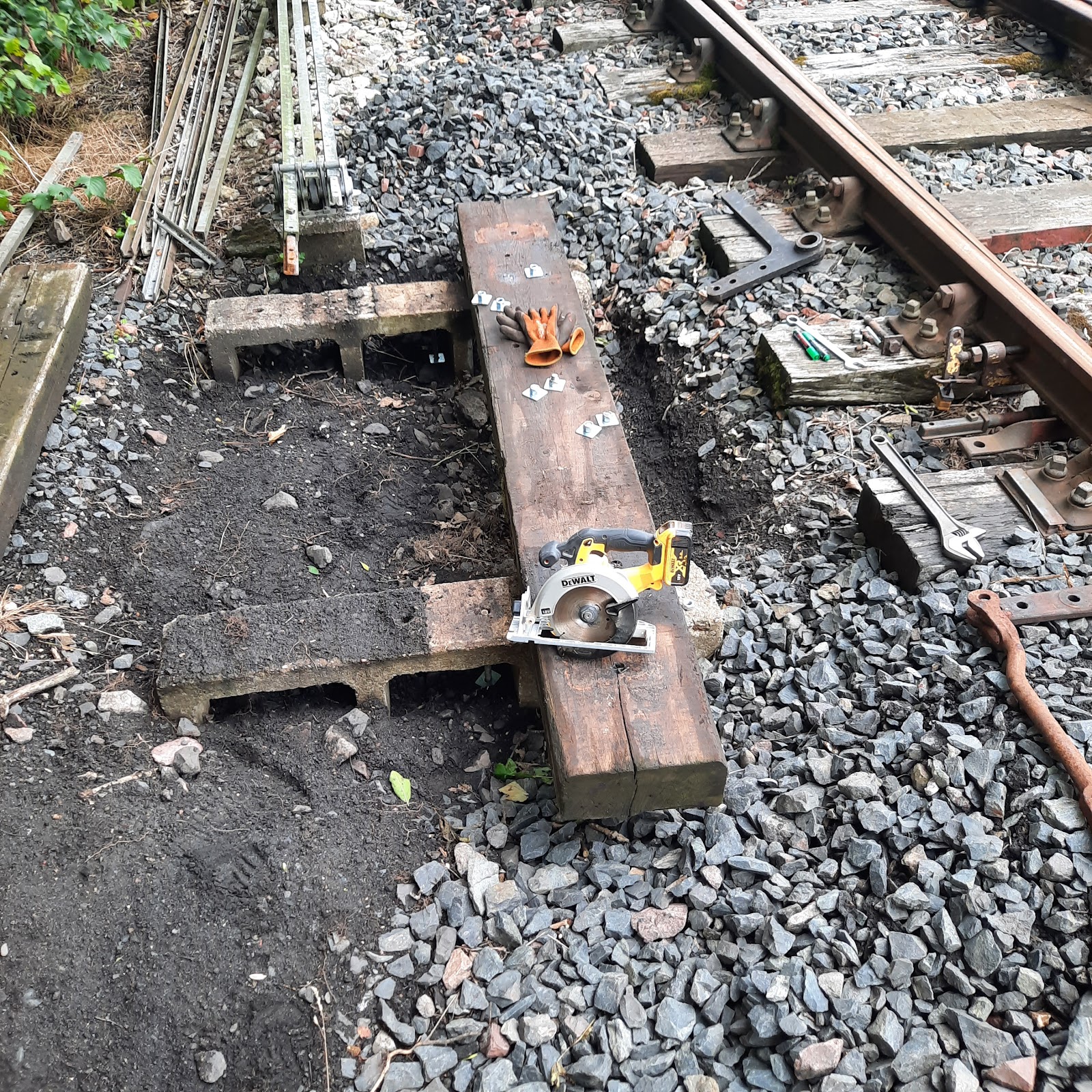Ash, Slag, Clinker, Bricks, Wire and all sorts:

...The Things You Find When Digging Holes! Whilst Matt has been concentrating on the signal wire stakes (see other posts), we've also been trying to work our exactly where to place the wooden benches that will carry the flat wheels. These take the signal wires through (approximately) 90° to route underneath the track; from the wire run to the signals themselves. The first such bench we chose to make needs to take 9 wires, and is one of the more awkward to position. Why so many wires? Well, that's a story for another day, although we have alluded to dual control of certain signals between the West (S&D) box and the Junction box... Having determined the location (driven by the signal locations, sleeper spacings and consideration of walking routes and future projects), we roughed out a bench top, using some seized flat wheels to look at alignments. This determined the length and width of the bench we needed, and allowed us to cut the timber. We opted to drill right through, ...







